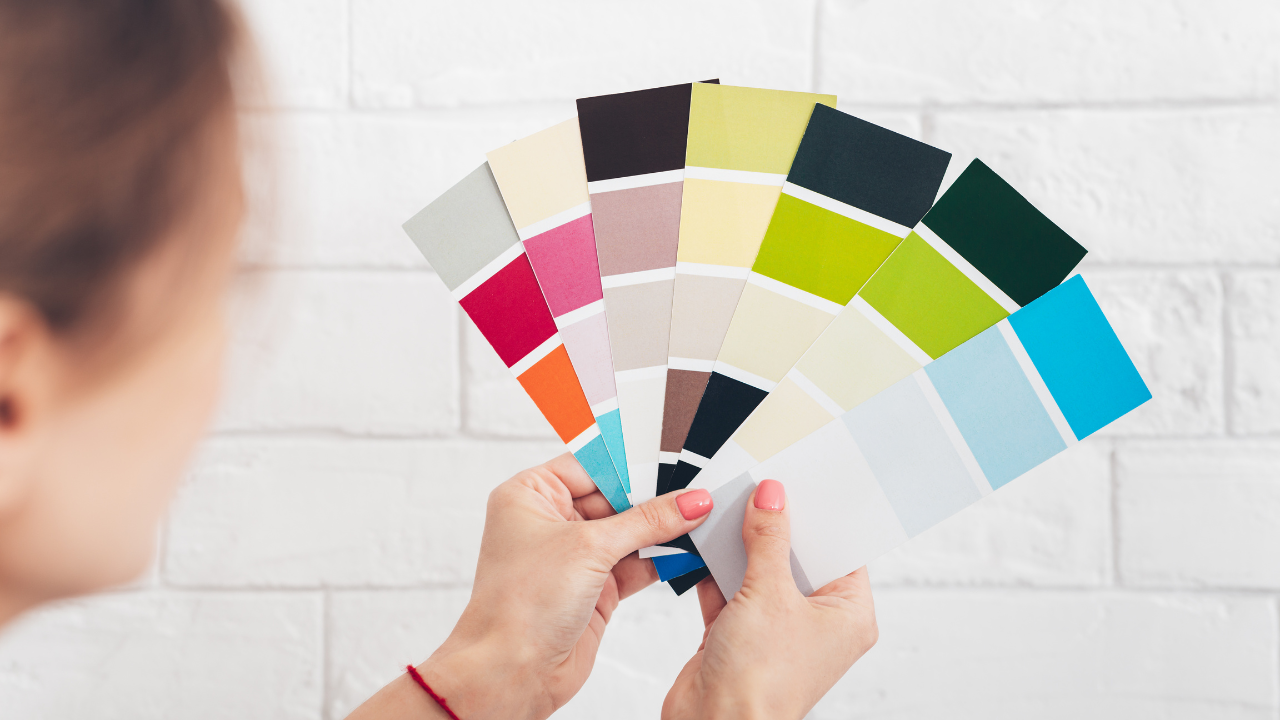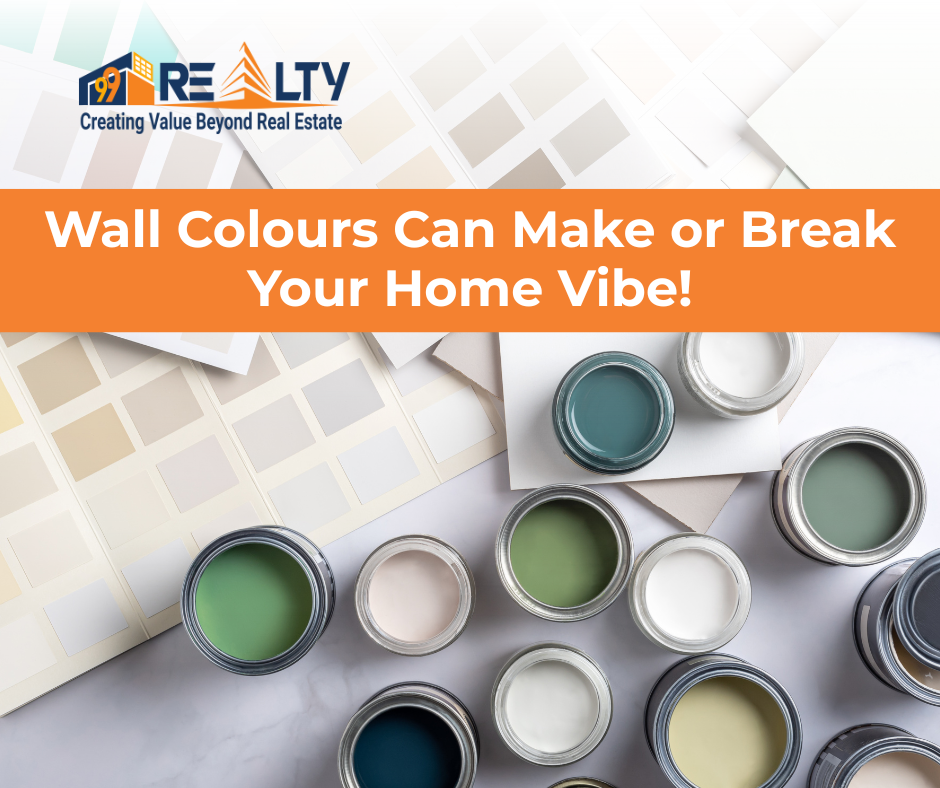Imagine walking into your brand-new house. Everything’s perfect—the furniture is sleek, the lights are dreamy, but the wall colour? Off. And suddenly, it just doesn’t feel like home.
Choosing the right wall colours is not just about aesthetics. It’s about mood, energy, emotions, and even your mental health. Especially in Indian homes, where our culture, climate, and lifestyle are vibrant and diverse, the right shade can elevate your space—and the wrong one can make it unbearable.
So how do you make the right choice? Let’s break it down.
The Science Behind Colours and Human Emotions
Ever felt instantly relaxed in a blue room or oddly energetic in a yellow kitchen? That’s not a coincidence. Science tells us that colours talk directly to our brains, triggering emotions before we even realize it. For example, blues and greens tend to calm us, while reds and yellows can make us feel more alert or even hungry.
Every colour triggers a psychological reaction. Warm tones like red or orange evoke energy and passion, while cool shades like blue and green promote calmness and relaxation. Your walls are like silent influencers, shaping how you feel daily.
- Red = Excitement, passion (but also aggression if overused)
- Blue = Calm, trust (but too much = cold or distant)
- Yellow = Joy, optimism (can be overwhelming in large doses)
- Green = Balance, freshness (great for mental health)
- White = Cleanliness, simplicity (but too plain can feel lifeless)
- Grey = Neutrality, modernity (can be dull if not balanced)
- Brown = Warmth, security (can feel heavy if overused)
Transform Your Walls with Royal Modern Texture Paint Designs: Trending Ideas for a Luxe Look
Real-life Examples of Colour Impact
Ever wondered why fast-food joints use red and yellow? It stimulates appetite and urgency. Or why spas go for greens and neutrals? To calm your nerves. Now imagine painting your bedroom bright red—nightmare, right?
Common Colour Mistakes Indian Homeowners Make

Copying Others Blindly
Just because your neighbour’s turquoise wall looked Instagram-worthy doesn’t mean it’ll suit your home. Each space has a different light, vibe, and need.
Ignoring Room Purpose
A study room in dark maroon? Not ideal. A kitchen in sterile white? May feel too cold. Every room serves a purpose—and the colour should reflect that.
Falling for Trends, Not Needs
Trendy colours may be in today, but your wall isn’t an Instagram story that disappears in 24 hours. Choose what feels right for YOU.
Choosing Colours In-Store Without Testing at Home
Lighting in stores and showrooms is very different from natural lighting at home. A colour that looks soft beige in-store might turn into a peachy nightmare in your bedroom. Always test samples on your actual wall before committing.
Picking Too Many Bold Colours in One Space
Bold is beautiful—but not when your room starts to feel like a circus. Too many loud colours in one space can create visual chaos and mess with your mood. Stick to a balanced palette with one or two strong colours, complemented by neutrals.
Factors to Consider Before Choosing Wall Colours
Room Size and Natural Light
Small rooms benefit from lighter shades that create an illusion of space, while large rooms can handle deeper hues. Always check how sunlight hits the room at different times of the day.
Purpose of the Room
Bedrooms call for soothing tones, while living rooms can experiment with bolder colours. Kitchens and dining areas often work best with warm, inviting shades.
Existing Furniture and Decor
Coordinate your wall colours with your furniture, curtains, and art. Clashing colours can make even the most beautiful furniture look out of place.
Vaastu and Cultural Beliefs
Many Indian families follow Vaastu Shastra, which suggests specific colours for different directions and rooms. For example, east-facing rooms benefit from white or light blue, while the kitchen (usually in the southeast) is best painted in reds or oranges.
Vaastu House: Ideal Vaastu Tips for Your New Home to Attract Positive Energy
Popular Colour Choices for Indian Homes
Living Room
– Warm neutrals like beige, taupe, or cream
– Statement walls in deep blue, emerald, or maroon
Bedroom
– Pastel shades like lavender, blush pink, or sky blue
– Earthy tones for a cozy vibe
Kitchen and Dining Area
– Sunny yellows, soft greens, or even classic white
– Avoid too much red, as it can feel overwhelming
Kids’ Room
– Playful shades: mint, peach, or pastel blue
– Chalkboard walls for creativity
Puja Room
– Whites, yellows, or light oranges for a spiritual, serene atmosphere
Step-by-Step Guide to Choosing the Best Wall Colours
Step 1 – Visualize and Gather Inspiration
Browse magazines, Pinterest, or even your friends’ homes. Snap photos of colours that catch your eye. Apps from major paint brands let you virtually “paint” your walls before committing.
Step 2 – Test with Samples
Never buy paint based on a tiny swatch. Get tester pots and paint patches on your walls. Observe them at different times of the day, as light can dramatically change how a colour looks.
Step 3 – Evaluate Lighting and Space
Natural and artificial light can make or break a colour. North-facing rooms might need warm hues, while south-facing rooms can handle cooler tones.
Step 4 – Consider Emotional Impact
Think about how you want to feel in each room. Calm? Energized? Inspired? Let your emotions guide your choice.
Step 5 – Finalize and Paint
Once you’re happy with your test patches, go ahead and paint. Remember to buy enough paint from the same batch to avoid subtle differences in shade.
Conclusion: Let the Walls Speak Your Story
Choosing the right colours is more than a design decision—it’s emotional. Your home should reflect who you are and how you want to feel inside it. Be thoughtful, be bold, and above all, be you. Whether it’s a splash of sunshine yellow in the kitchen or a soothing teal in your bedroom, let your walls whisper your story every day.
FAQs
Q1: Can I use dark colours in small rooms?
A: Yes, but use them as accent walls or pair with lighter shades to avoid making the space feel cramped.
Q2: How do I pick colours that suit Indian festivals?
A: Opt for warm, vibrant hues like saffron, maroon, or gold for festive flair. These colours work well with traditional Indian décor.
Q3: What’s the best way to test paint colours?
A: Always use tester pots and paint large patches on your wall. Check them at different times of day to see how lighting affects the colour.
Q4: How can I make sure my chosen colours don’t clash with my furniture?
A: Carry fabric or décor samples when you shop for paint, or use digital visualization tools to see how everything fits together.
Q5: Do colours really affect my mood?
A: Absolutely! Science shows that colours can boost energy, calm nerves, or even make you feel hungry. Choose wisely for each room’s purpose!
Need Help?
Need help evaluating a property or planning your next move in the market?
Reach out to 99 REALTY – your trusted real estate partner for smarter choices.
Subscribe to get updates on our latest posts and market trends.






Join The Discussion